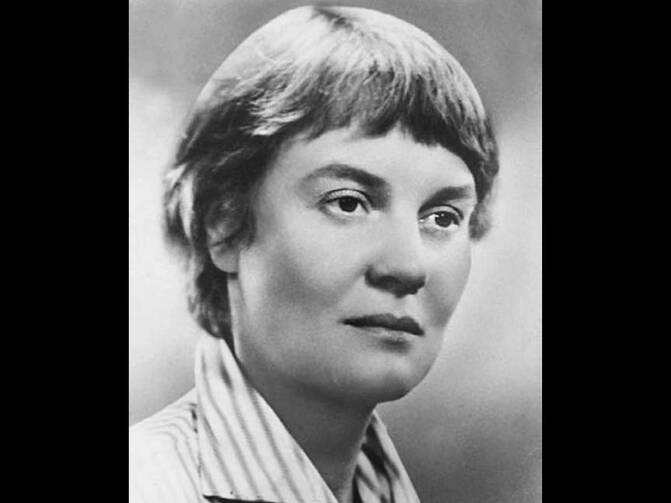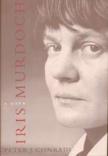A Hungry Philosopher
The novelist Iris Murdoch died only two years ago at the age of 79, but already a memoir, film and biography have appeared to preserve her memory for devoted fans and to introduce her to new audiences. In Iris Murdoch: A Life, Peter J. Conradi offers a wide-ranging look at the life of a writer and philosopher who had a remarkable “hunger for the spiritual in a post-theistic age.”
Conradi, the literary executor of Murdoch’s estate, was a personal friend of hers, so he refers to her as “Iris” throughout the book, achieving a tone of personal reminiscence or tribute while not abandoning his scholarly approach. The power and richness of Murdoch’s intellectual life suffuse Conradi’s book, which accordingly comes across as an appreciative intellectual hagiography, filled with Murdoch’s insights and apothegms.
Murdoch was born in 1918 in Dublin to a Protestant family and spent nearly all her life in England. During a warm and loving childhood, she fell in love with reading, and she thought of herself as living inside the books that were read to her. An only child, Murdoch began writing stories at age 9, “in order to provide herself with imaginary siblings.” How well she succeeded may be judged by the rich panoply of characters found in her 26 novels and several plays.
Murdoch won a scholarship to an exclusive girls school, Badminton, where she encountered some remarkable educators. Teachers and mentors figure prominently in her life and fiction. She comments about one of her professors, “He created me.”
The darkening clouds of World War II hovered over her subsequent university years at Somerville College, Oxford. She and her friends “wondered if we were going to die young and what it all meant anyway.” To the two great influences on her intellectual life—Plato and Shakespeare—must be added the dark figure of Hitler. He was an apotheosis of evil, standing always in the background of her writing, and many of Murdoch’s friends and characters can only be described as Holocaust-haunted.
After studying at Oxford, Murdoch combined the Bohemian with the bureaucratic, falling in and out of love while working for four years in the Treasury Office and then undertaking relief work with a United Nations agency before beginning her career as a professor of philosophy. In her work with displaced persons Murdoch observed a “complete breakdown of society,” and Conradi does a good job of noting how this experience translated into characters that are politically or spiritually displaced.
The sheer volume and diversity of Murdoch’s writing precludes thorough analysis of all her novels, plays and philosophical works, but Conradi effectively identifies recurring themes, such as the tension between saint and artist, and the quest for redemption or spiritual validity in a painfully contingent world.
Murdoch had a rather tumultuous love life. (One would-be suitor tore up a bed of irises as a symbolic response to being spurned.) Over time and through many novels and journal entries, she elucidates a philosophy of relationship-oriented questions, such as, “Does this endless capacity for new loves show—what? that I am very shallow, unstable?” She captures with crystalline clarity small but important human moments, such as kissing a disconsolate young man: “His cheeks tasted salt—he had been weeping very much.” For Murdoch, love’s pageant was by turns chimerical, alchemical and miraculous. Her fiction implicitly argues that one must be something of a philosopher to be a true lover, and conversely that one must be something of a lover to be a profound philosopher.
Murdoch’s life seemed filled with larger-than-life figures like Elias Canetti, whom Conradi describes as “the artist-as-manipulative-and-sadistic-mythomaniac who had struck a Faustian bargain, the mystifier-enchanter Iris feared turning into, whom indeed she might have become.” Ultimately the most significant of her partners, and perhaps also the most self-effacing, was the English professor John Bayley, whom Murdoch married in 1956. They settled into a happy domestic life, surrounded by friends, books and writing projects. Bayley sustained her through the onset and progression of Alzheimer’s disease, and after her death wrote the touching memoir, Elegy for Iris.
As novelist and philosopher, Murdoch possessed a double portion of wonder for the world. She wrote in A Fairly Honorable Defeat: “People from a planet without flowers would think we must be mad with joy the whole time to have such things about us: white campion, self-heal, byrony [sic], vetch.” She could ask the higher and greater questions, as when she marked a student’s paper on Kant with the pointed question, “What about love?” She decried television as “frenetic shadows” and called for “fewer prophets and more saints” in the world. Murdochian saints are those who strive to live at a higher moral level than the rest of the human family, but Conradi notes that her idealism was always tempered by a pragmatic grasp of humanity’s foibles and flaws: “This is the Iris whose end-of-term report on the human race appears to be ‘could try harder.’”
Conradi concedes that he has written only a first biography of Murdoch, not a definitive one. His book is a welcome insider’s view of Murdoch, and to the extent Conradi is correct in asserting that Murdoch “wanted the idea of the holy to survive in a partly terrible world” he has helped in that effort by presenting the first extensive biographical treatment of a life that future scholars will explore further.
This article also appeared in print, under the headline “A Hungry Philosopher,” in the April 1, 2002, issue.











